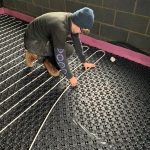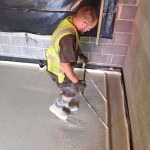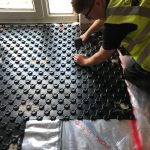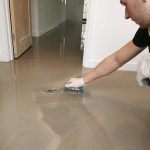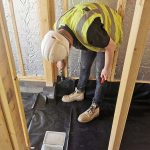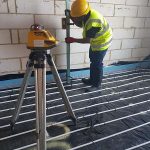Co-Dunkall’s Top Tips
We can’t all be experts in floor screeding so whether it’s advice on prep work or which type of screed you require, we’re here to help you get your property ready for underfloor heating and insulation in Norfolk, Suffolk and beyond! See our 2022 screeding tips below!
See some of our handy tips below!
- No gaps! Is the building wind and water tight? If not your screed is left vulnerable to the elements and other external threats.
- Wash out area! Have you got a designated wash out area? An old rubble heap or a skip is ideal.
- Give it a clean! Is the floor clean from any insulation dust/mud etc? (This could rise to the top of the screed and prevent a smooth surface finish)
- Tight fit! Do you have a slip membrane tightly fitted on top of your insulation?
- Don’t forget the soil stacks! Have you installed a perimeter expansion strip around all internal and external walls and soil stacks? (25mm insulation upstands do not act as expansion strip)
- Taped up! Have you used duct tape to tape all polythene joints and perimeter strip? (do not use aluminium/foil tape as this will react with the screed)
- Plenty of clips! Are your underfloor heating pipes secured?
- Under Pressure! Is your manifold filled and pressure tested?
- Know your floor level! Do you know your datum point? – Co-Dunkall Ltd suggest a minimum of 50mm average depth with UFH (thin section screeds are available)
- Know your screed! Ensure only plaster based products are used for Anhydrite screeds and only cement based products are used for cementitious screeds.
- Chill out! We recommend using antifreeze at point of installation of your underfloor heating to avoid frozen pipes, which is also a service we offer!
- Sand it! Make sure you prep your surface correctly. Remove any laitance before final finishes are installed by sanding your screed correctly.
For any other technical questions you have, simply give us a call!

